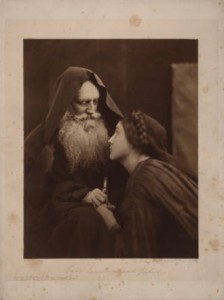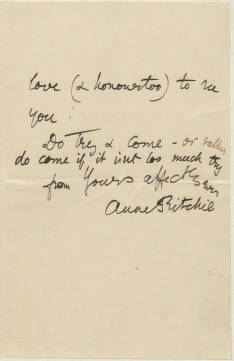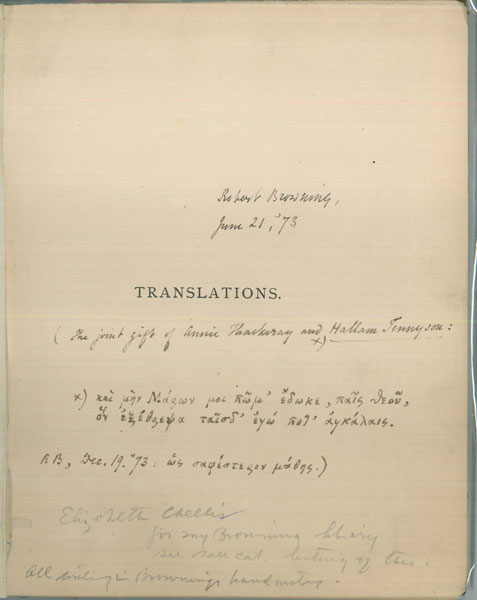By Jennifer Borderud, Access and Outreach Librarian
Julia Margaret Cameron (1815-1879) was a 19th-century photographer known for her portraits of Victorian celebrities and for her photographs depicting scenes from religious and literary works.
The Armstrong Browning Library has ten original photographs by Cameron. Five of these photographs are of Robert Browning who sat for Cameron in 1865 at the home of her neighbor Alfred Tennyson on the Isle of Wight.
Four additional photographs in the collection were gifts from Cameron to Browning and are inscribed by the photographer. These include a photograph of Julia Prinsep Stephen (née Jackson, formerly Duckworth, 1846-1895), Cameron’s niece and the mother of painter Vanessa Bell and writer Virginia Woolf; a photograph of English dramatist and poet Sir Henry Taylor (1800-1886) and Cameron’s maid Mary Ann Hillier (1847-1936) as Friar Lawrence and Juliet from Shakespeare’s Romeo and Juliet; a photograph titled La Madonna Aspettante, again featuring Mary Ann Hillier and William Frederick Gould (born 1861), a boy who lived near Cameron’s home; and a photograph of Anne Thackeray Ritchie (1837-1919), English writer and the daughter of novelist William Makepeace Thackeray.
The final photograph in the collection is of Hallam Tennyson (1852-1928), the eldest son of Alfred Tennyson.
The photographs have been digitized by Baylor’s Digital Projects Group and can be viewed here. Browning’s personal copy of his portrait by Cameron is on permanent display in the Research Hall of the Armstrong Browning Library.
Sources:
Barlow, Helen. “Cameron, Julia Margaret (1815–1879).” Oxford Dictionary of National Biography. Oxford University Press, 2004. Online edition, Oct. 2008. Web. 9 June 2015
Cox, Julian, and Colin Ford. Julia Margaret Cameron: The Complete Photographs. Los Angeles: The J. Paul Getty Museum, c2003. Print.










